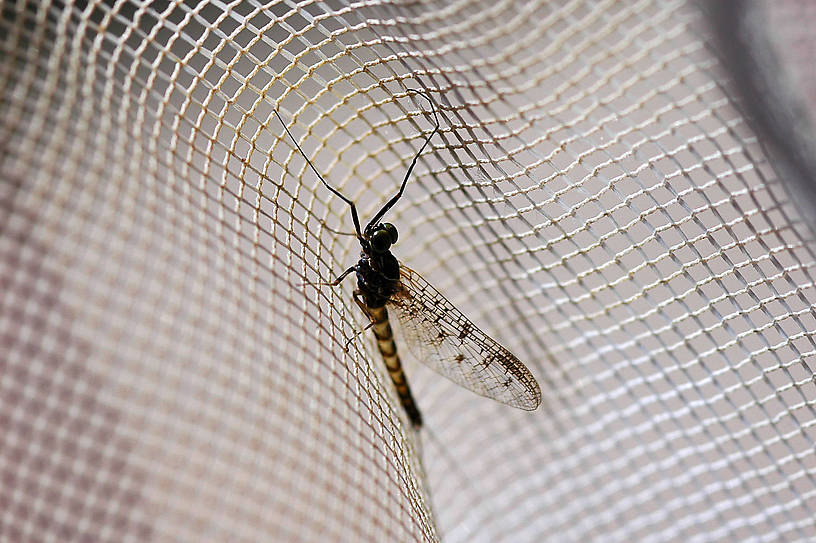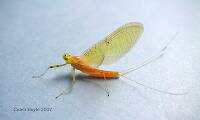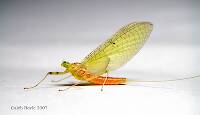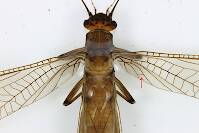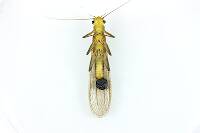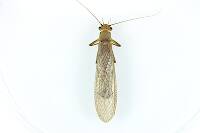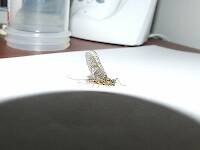
Hex Mayflies
Hexagenia limbata
The famous nocturnal Hex hatch of the Midwest (and a few other lucky locations) stirs to the surface mythically large brown trout that only touch streamers for the rest of the year.
Featured on the forum

This one was surprisingly straightforward to identify. The lack of a sclerite at the base of the lateral hump narrows the field quite a bit, and the other options followed fairly obvious characteristics to Clostoeca, which only has one species, Clostoeca disjuncta.

Troutnut is a project started in 2003 by salmonid ecologist Jason "Troutnut" Neuswanger to help anglers and
fly tyers unabashedly embrace the entomological side of the sport. Learn more about Troutnut or
support the project for an enhanced experience here.
GONZO on Aug 25, 2011August 25th, 2011, 10:17 am EDT
Might this specimen have been mislabeled? It appears to be a better match for A. subnotatus than A. oregonensis. The adult key in Zloty (1996) distinguishes A. subnotatus by the dark margins on the crossveins ("giving them a speckled appearance and forming three or four larger dark patches") and dark suffusion only at the base of the hindwing (Fig. 44B). A. oregonensis is supposed to lack the dark margins on the crossveins and have dark suffusion at the base of both the forewings and the hindwings (Fig. 44A). Table 1 in Zloty and Pritchard (1997) seems to qualify this slightly and describes oregonensis females "with brown shadings around some cross-veins but without brown patches."
McCafferty and Newell (2008) contains this record:
Are these photos of that specimen?
McCafferty and Newell (2008) contains this record:
Ameletus subnotatus Eaton.
FLATHEAD COUNTY: Hungry Horse Creek, (A) 12-V-2005, R. Newell [FLBS]
Are these photos of that specimen?
Quick Reply
Related Discussions
Topic
Replies
Last Reply
9
Jun 17, 2015
by Oldredbarn
by Oldredbarn
11
Aug 29, 2011
by Entoman
by Entoman
Acroneuria specimen moved from genus to species level
In Acroneuria carolinensis Stonefly Nymph by Entoman
In Acroneuria carolinensis Stonefly Nymph by Entoman
0
Mar 11, 2012
by Entoman
by Entoman
1
Oct 19, 2006
by Troutnut
by Troutnut


